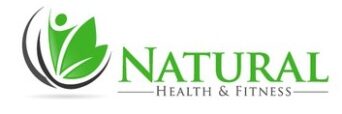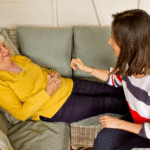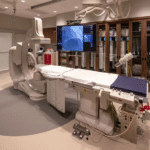In GERD, stomach contents, including acid and bile, flow back from the stomach into the esophagus, causing inflammation of the esophagus and pain in the lower chest.
Reflux occurs when the circular muscle that normally keeps stomach contents from returning to the esophagus (lower esophageal sphincter) does not work properly.
The most characteristic symptom is heartburn (burning pain behind the breastbone).
Diagnosis is based on symptoms and sometimes on esophageal pH tests.
The first treatment is to avoid substances that trigger the symptoms (such as alcohol and fatty foods) and to take medicines that reduce stomach acid, but if these methods are not effective, surgery may be necessary.
The esophagus is the hollow tube that connects the throat (pharynx) to the stomach. The lower esophageal sphincter is the ring of muscle holding the lower end of the esophagus closed so that food and stomach acid do not back up into the esophagus. When people swallow, this sphincter normally relaxes to let food pass into the stomach. (See also Overview of the Esophagus .)
Gastroesophageal reflux disease (GERD) is common. It occurs in 10 to 20% of adults. It also occurs frequently in infants, sometimes from birth ( see Gastroesophageal Reflux Disease in Children ).
The stomach lining is protected from the effects of its own acid. Because the esophagus lacks such a protective lining, stomach acid and bile backing up into the esophagus can cause symptoms and, in some cases, damage.
Back flow of acid and bile into the esophagus can be observed when the lower esophageal sphincter is not working properly. When standing or sitting, gravity prevents reflux of gastric contents into the esophagus, which explains why reflux worsens when lying down. Reflux occurs more quickly after meals, when the volume and acidity of gastric contents are higher and the sphincter is less able to function properly. Factors contributing to reflux
Weight gain
fatty food
Caffeinated beverages and soft drinks
Alcohol
Tobacco use
Certain medications
Among the types of drugs that interfere with lower esophageal sphincter function are drugs with anticholinergic effects (such as many antihistamines and some antidepressants), calcium channel blockers, progesterone, and nitrates. Delayed emptying of the stomach (eg due to diabetes or opioid use) can make reflux worse.
GERD symptoms
Heartburn (burning-like pain behind the breastbone) is the most apparent symptom of gastroesophageal reflux disease. Heartburn can be accompanied by regurgitation when stomach contents reach the mouth. If stomach contents reach the mouth, it can sometimes cause a sore throat, hoarseness, cough, or a feeling of a lump in the throat (pharyngeal paresthesia). Sometimes stomach contents flow into the lungs, causing coughing and/or sneezing. People who have had heartburn for a long time sometimes develop trouble swallowing ( dysphagia ).
Complications of gastroesophageal reflux disease
Prolonged exposure of the lower esophagus to repeated reflux may cause
Inflammation of the esophagus (oesophagitis)
Ulcers (open sores) of the esophagus (erosive esophagitis)
A narrowing of the esophagus (esophageal stricture)
Abnormal cells in the esophagus that can become cancerous (see Esophageal cancer )
Inflammation of the esophagus (esophagitis or erosive esophagitis) causes the typical symptoms of gastroesophageal reflux disease, but may be more severe. It can also cause pain when swallowing (odynophagia). Some people have bleeding that is usually light but can be heavy. Blood may be vomited or may travel down the digestive tract, releasing black, tarry stools (melena) or bright red blood, if the bleeding is severe. Light bleeding can lead to iron deficiency anemia if it continues for a long time.
Esophagitis caused by gastroesophageal reflux disease
reflux_esophagitis_new_arrow_high_en
Hide details
Photo provided by Dr. David M. Martin.
Esophageal ulcers are open sores in the lining of the esophagus. When swallowing, they can cause chest pain behind the breastbone or just below it and the same location as heartburn.
The narrowing (stenosis) of the esophagus caused by reflux makes it increasingly difficult to swallow solid foods.






Leave a Reply
You must be logged in to post a comment.